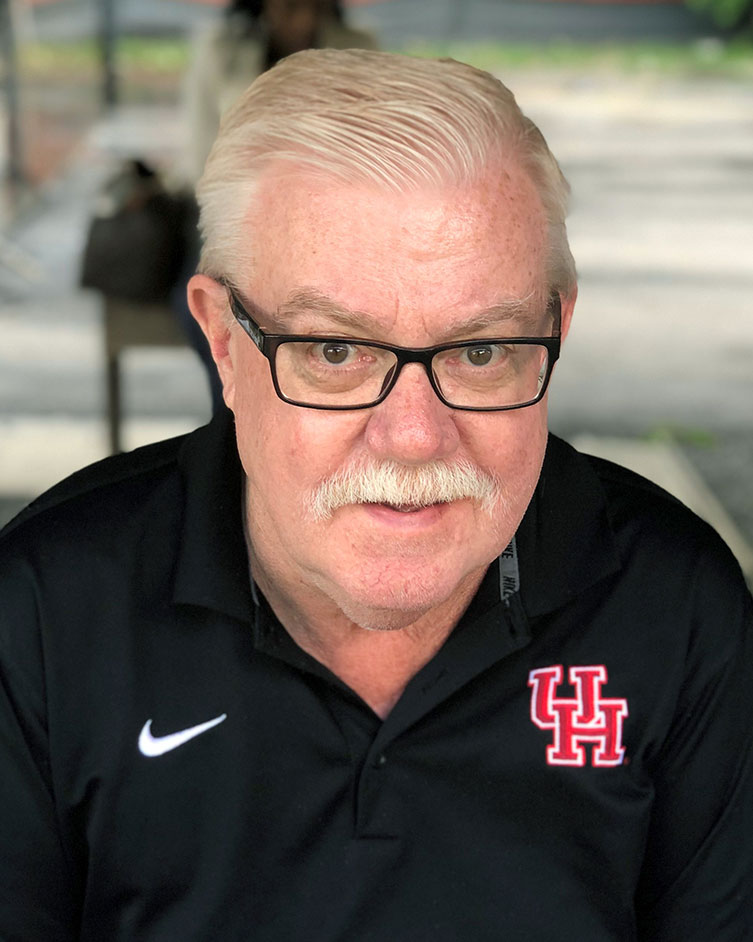In Memoriam: Dr. Robert W. Talbot
Dr. Robert W. Talbot, an internationally renowned scholar of atmospheric chemistry at the University of Houston’s Department of Earth and Atmospheric Sciences (EAS) since 2011, passed away on February 2, 2020, after a two-year battle with cancer.

Bob was born on Sept. 5, 1953. He received his B.S. from Florida Institute of Technology in oceanography in 1975, and his M.S. and Ph.D. degrees in atmospheric chemistry from the University of Wisconsin-Madison in 1977 and 1981, respectively. From 1981 to 1983, he held a research faculty position in the Department of Environmental Systems Engineering-Environmental Chemistry Program at Clemson University.
In 1983, he was awarded a National Research Council Postdoctoral Fellowship in the Atmospheric Sciences Division at NASA Langley Research Center, one of the premier centers for research in atmospheric chemistry, where he later held the position of senior research associate from 1985 to 1988. During this productive period, Bob developed and flew advanced instrumentation on NASA aircraft and was among the first scientists who conducted a series of aircraft-based campaigns to measure the chemical composition of the global troposphere under NASA’s Global Tropospheric Experiment (GTE). Bob and the GTE team provided the first three-dimensional views of tropospheric composition in remote regions, which formed the basis for contemporary tropospheric chemistry.
In 1988, he joined the faculty at the University of New Hampshire (UNH) and held various positions there, including director of the Climate Change Research Center and director of the NOAA AIRMAP Cooperative Institute from 1999. At UNH, Bob pioneered high-accuracy measurements of atmospheric nitric acid and mercury from aircraft and served in leadership roles in several major air quality field campaigns around the globe. In 2011, he was hired by UH’s EAS department as a professor of atmospheric chemistry.
At UH, Bob was the founding director of the Institute for Climate and Atmospheric Sciences, created a state-of-the-art laboratory facility for mercury and methane including its isotopes, and oversaw the rapid expansion of the atmospheric science program from three to six faculty members. Bob’s leadership in the expansion of the atmospheric sciences program and his mentoring of young EAS faculty hires led to the growth of the M.S. and Ph.D. degrees in atmospheric sciences.
During this period, Bob’s research effort focused on monitoring air quality in the Houston area that included his use of a mobile air quality laboratory, which became a signature research platform of UH’s Atmospheric Chemistry Program. He used the mobile laboratory to study the methane budget of Houston, the effect of climate change and sea breeze on Houston’s ozone levels, and fugitive methane leaks from fracking of natural gas infrastructure in Texas wells into the Barnett Shale.
He was also heavily involved in UH Energy, serving as a Fellow where he contributed blogs to Forbes magazine and became a founding member of UH’s Center on Carbon Management in Energy. During his time at UH, Bob established a high-quality air quality research station at Nanjing University, which performed the first measurement of atmospheric mercury in mainland China.
In his career that spanned more than four decades, Bob used detailed atmospheric measurements to improve our understanding of the chemical composition of the troposphere and the associated impacts on air quality, ecosystems and climate. Some of his most cited earlier studies in the 1980s and 1990s addressed measurements of the volume and content of wind-blown Saharan dust found over large areas of North and South America. He published more than 270 papers and was an ISI Highly-Cited Researcher with the highest citations (H index of 77) among faculty members in the EAS department.
Besides research, Bob mentored dozens of graduate students and undergraduate students that included two M.S. students and six Ph.D. students where he served as the primary supervisor. Several of his Ph.D. students have moved on to successful positions as faculty members or as researchers in national labs.
Bob developed a UH Core Curriculum class for non-science majors called Introduction to Global Climate Change which has more than 500 enrolled students in the spring 2020 semester. He was a beloved professor and made himself easily accessible to students. Despite his two-year battle with cancer, he never missed a class including his last class taught five days before he passed away. Bob will be missed by many students, faculty, and staff at UH and by the atmospheric chemistry community.
Bob is survived by his wife, Rosemary, and three daughters, Marissa, Kristen, and Erica.
